How Job Architecture Shapes Employee Journeys
Table of contents
- Missing job architecture: Navigating without clear directions
- The burnout effect: When clarity is missing
- Clear job architecture: A guided path to success
- The power of job architecture on organizational success
- Overcoming obstacles in creating job architecture with advanced analytics and predictive modeling
Imagine starting a new job on your first day, excited and ready to dive into your role. As you enter the office, you’re handed a map of the building and told that you must navigate different rooms, but no clear instructions are provided. You’re left to figure out where you should go, what you should do, and how to reach your destination solely based on the map. This scenario aptly captures the essence of a workplace without a well-defined job architecture — employees are given vague directions and expectations, leading to confusion, frustration, and eventually burnout.
It’s worth noting that this issue often starts from day one. Only 12% of employees agree that their company does a good job onboarding new employees. In this article, we’ll explore the vital role of job architecture in creating a structured and fulfilling work environment for your employees right from the start.
Missing job architecture: Navigating without clear directions
Just as the absence of clear instructions on the map can leave you feeling lost and anxious, the absence of structured job architecture can leave employees feeling disoriented and stressed.
“Job architecture provides a company with a framework to understand roles and align jobs based on the type of work performed. It makes for a uniform way of defining roles within a company and then serves as a basis for making strategic decisions.’ — AIHR
Without clear job levels, titles, and responsibilities, employees may struggle to understand their roles and contributions to the organization. They might be uncertain about the skills they need to develop and the expectations set for their performance. As a result, they invest time and effort in tasks that may not align with their responsibilities, leading to inefficiency and job satisfaction.
The burnout effect: When clarity is missing
As time passes, the absence of job architecture takes its toll. Employees become overwhelmed by ambiguity and lack of direction. Just like navigating with a confusing map can drain your energy and patience, the absence of well-defined roles and expectations can lead to burnout in the workplace.
Imagine repeatedly walking down hallways that lead to dead ends, not knowing which path to take. Similarly, employees without clear career paths and advancement criteria may feel stuck, demotivated, and unsure how to progress within the organization. The constant uncertainty can chip away at their enthusiasm, leaving them disengaged and emotionally exhausted.
Step into the future of hiring with our job architecture-backed templates
Discover how to craft descriptions that attract candidates and resonate with their aspirations and the industry’s demands.
Clear job architecture: A guided path to success
Now, consider a different scenario. On your first day of work, you receive a map with well-marked paths, clear directions, and distinct landmarks. This map ensures you know where to go, how to get there, and what to expect. You navigate with confidence, avoiding unnecessary detours and enjoying a smooth journey.
Likewise, a workplace with well-defined job architecture provides employees with clear job levels, titles, and responsibilities. Employees understand their roles, contributions, and the skills required to excel. They have a defined career path, knowing how to advance and what milestones to achieve. This clarity fosters motivation, job satisfaction, and a sense of accomplishment, leading to greater engagement and a lower risk of burnout.
Through a detailed comparison, we’ll shed light on how a comprehensive job architecture can shape the employee experience, influence job satisfaction, and even mitigate burnout. Join us as we delve into two scenarios — one with missing job architecture and the other with a guided path — to understand the crucial role of job architecture in enhancing employees’ journeys within the workplace.
The power of job architecture on organizational success
A robust job architecture is a guiding force for organizations in their pursuit of success just as much as it does for every employee. This blog post section examines two scenarios – one with a clear job architecture and the other without. Through this comparison, we’ll unveil how a well-structured job architecture transforms the employee experience, enhances strategic decision-making, ensures adaptability, fosters talent management, and elevates overall organizational efficiency.
This table illustrates how well-defined job architecture positively impacts organizations by promoting efficient operations, goal-oriented growth, structured leadership, a motivated workforce, effective compensation, and mitigated burnout. On the other hand, organizations without clear job architecture face challenges related to confusion, disengagement, communication breakdowns, and increased burnout among employees.
Overcoming obstacles in creating job architecture with advanced analytics and predictive modeling
Creating an efficient job architecture can encounter significant challenges, ranging from ambiguity in role definitions to difficulty aligning with market trends. However, advanced analytics and predictive modeling offer powerful solutions that address these obstacles and pave the way for a successful job architecture. Let’s explore the specific problems these tools help overcome:
Problem: Ambiguity in role definitions.
Research shows that nearly 50% of employees across all sectors currently lack role clarity in the workplace.
Solution: Comprehensive data analysis
Defining roles accurately across departments can lead to confusion and inefficiencies. Advanced analytics systematically analyze internal job-related data, industry benchmarks, market trends, and employee performance metrics. This holistic approach provides a clear view of existing roles, structures, and compensation practices, minimizing ambiguity.
Transforming workforce architecture for enhanced profitability: The CMS success story
When CMS sought to boost service line profitability, HRForecast discovered that reimagining workforce architecture was the solution for greater efficiency and agility.
Problem: Reactive rather than proactive design
The World Economic Forum predicts that by 2025, 40% of the skills employees need will change, making alignment with market trends crucial.
Solution: Identifying patterns and trends
Designing job roles based on gut feelings rather than data can lead to inefficiencies. Predictive modeling utilizes historical data to identify patterns, trends, and correlations. By analyzing factors such as skills, qualifications, performance, and market demands, predictive models guide the creation of roles that align with data-driven insights.
Problem: Lack of customization in role mapping
Companies often grapple with the need for customized role mapping within their workforce architecture. The absence of tailored role mapping can lead to inefficiencies, hampering an organization’s ability to respond effectively to changing market dynamics and seize emerging opportunities.
Source: Effectory
Solution: Customized role mapping
One-size-fits-all role mapping can undermine the uniqueness of roles. Advanced analytics map organizational roles based on skills, responsibilities, and qualifications. This customized approach offers a granular understanding of each role’s contribution, promoting tailored role definitions and responsibilities.
Problem: Uncertainty in future talent needs
“Only 17% of organizations believe they can anticipate the skills they’ll require to any great extent, and only 16% expect to make significant investments in learning over the next three years. Combined, this lack of information and investment threatens to thwart organizations’ efforts to build the workforces they’ll need in both the short and long term.” – Deloitte
Solution: Predicting future needs
Anticipating future talent needs based on guesswork can result in skill shortages. Predictive modeling considers market shifts, industry trends, and technological advancements to forecast future talent requirements. This foresight enables organizations to design roles that align with emerging demands.
Problem: Inadequate skill gap analysis
The skills gap isn’t going away or fixing itself—over 50% of respondents feel that skills shortages have worsened or greatly worsened in their organizations in the last two years. Less than 10% of respondents report skills shortage improvements. – SHRM
Solution: Skill gap analysis
Ignoring skill gaps within the organization can hinder growth. Advanced analytics can identify skill gaps, highlighting areas where training or recruitment is needed. This analysis informs the creation of targeted career development plans that address gaps, fostering employee growth.
Problem: Compensation disparities
In a survey, employees were asked about their primary reasons for not giving their best at work. Astonishingly, 59.3% of respondents believed their work was underpaid or undervalued. – HR’s guide to combating quiet quitting
Solution: Equitable compensation design
Designing compensation structures without market insights can lead to disparities. Predictive modeling recommends fair and competitive compensation by comparing roles against market rates and industry standards. This ensures equitable pay that aligns with job values and norms.
Problem: Lack of clear career paths
A July 2021 poll by Monster found that 49% of workers expect their employer to play a part in career development.
Solution: Career pathing insights
Without clear career paths, employee engagement and retention suffer. Advanced analytics provide insights into employee career progression paths. Organizations can design achievable paths that enhance engagement by analyzing historical trajectories, skill development, and performance.
Problem: Generic growth opportunities
“Employees are leaving their current employers for better professional development opportunities (45%) at similar rates as they leave for higher compensation (48%),” said Vitorio Bretas, director of the Gartner HR practice.
Solution: Tailored growth opportunities
Generic growth opportunities can fail to engage employees. Predictive modeling suggests growth paths based on skills, aspirations, and market trends. This personalization fosters continuous learning and development tailored to individual needs.
Navigating the intricacies of job architecture can be complex, requiring data-driven insights and expertise. This is where HRForecast offers advanced analytics and predictive modeling to help identify skills gaps, assess market competitiveness, and provide actionable recommendations for refining your job architecture by analyzing internal and external data. Contact our consultants to help your organization’s job architecture align with strategic goals, enhance employee satisfaction, and foster long-term success.
Stay up to date with our newsletter
Every month, we’ll send you a curated newsletter with our updates and the latest industry news.













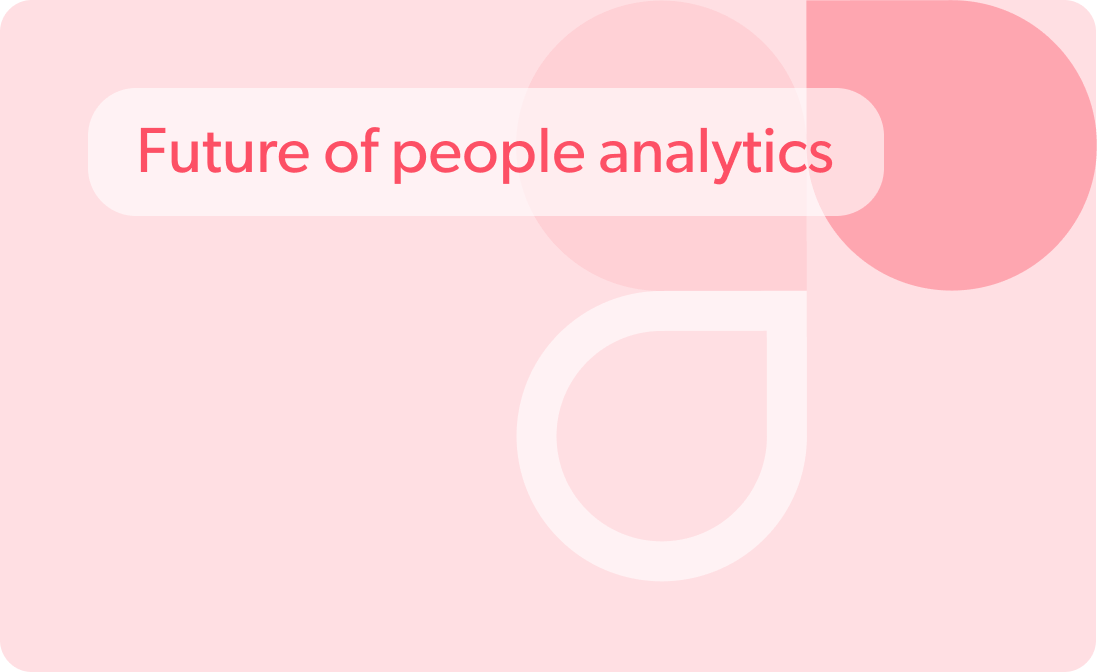
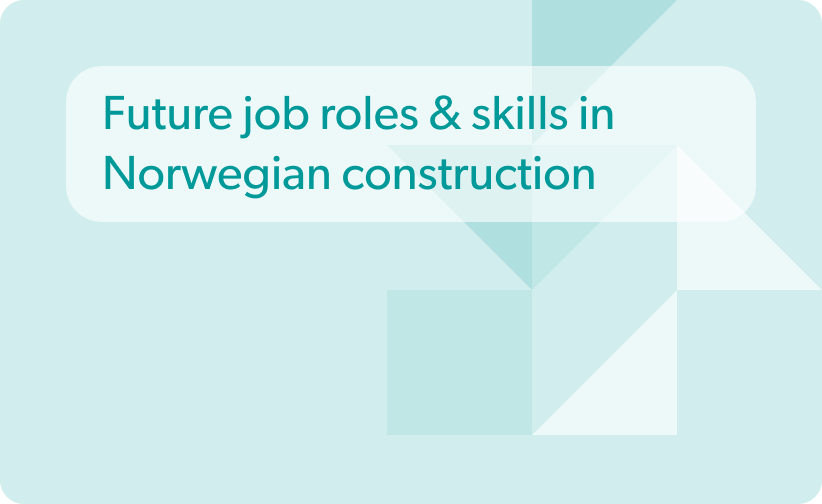








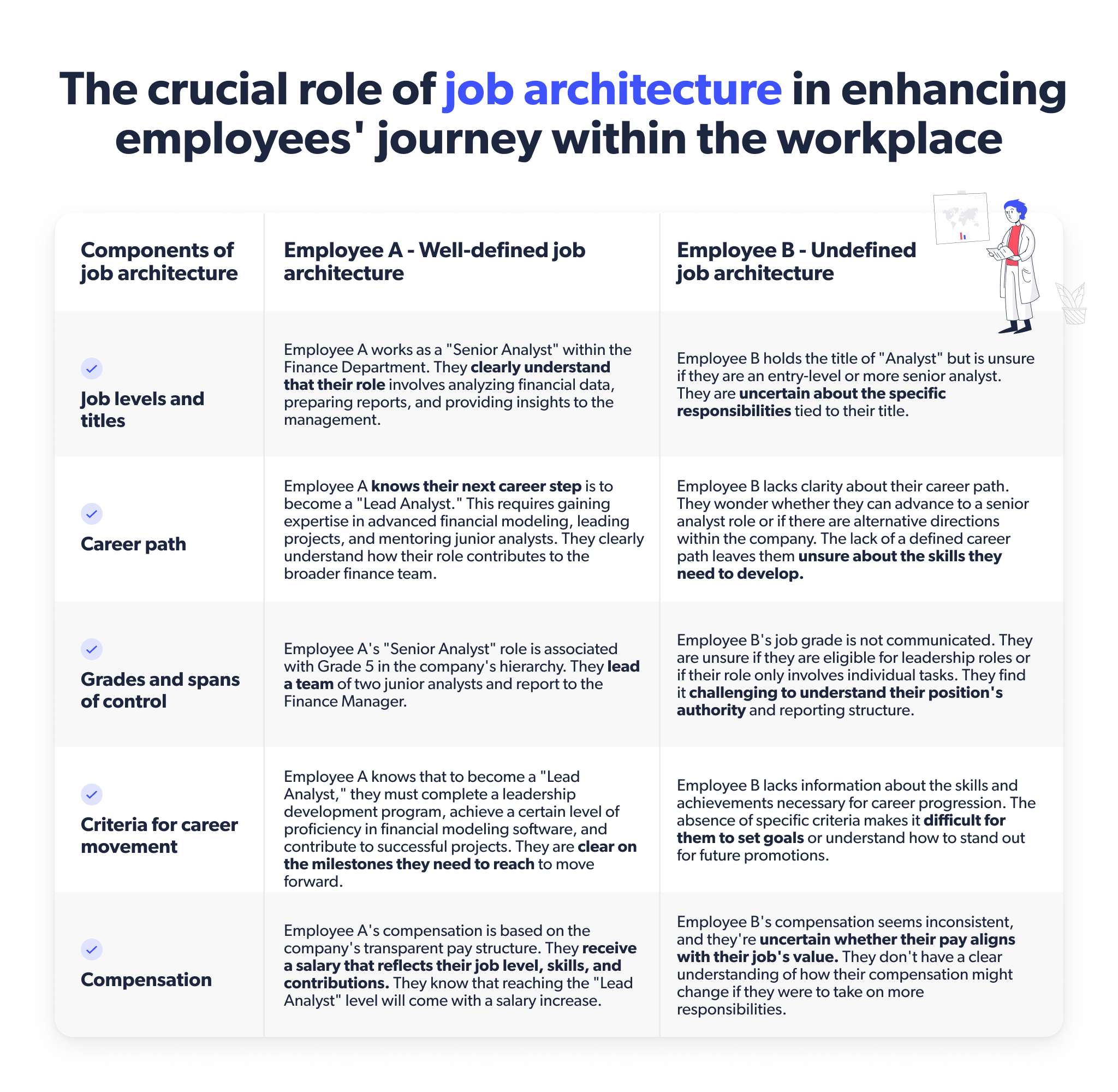
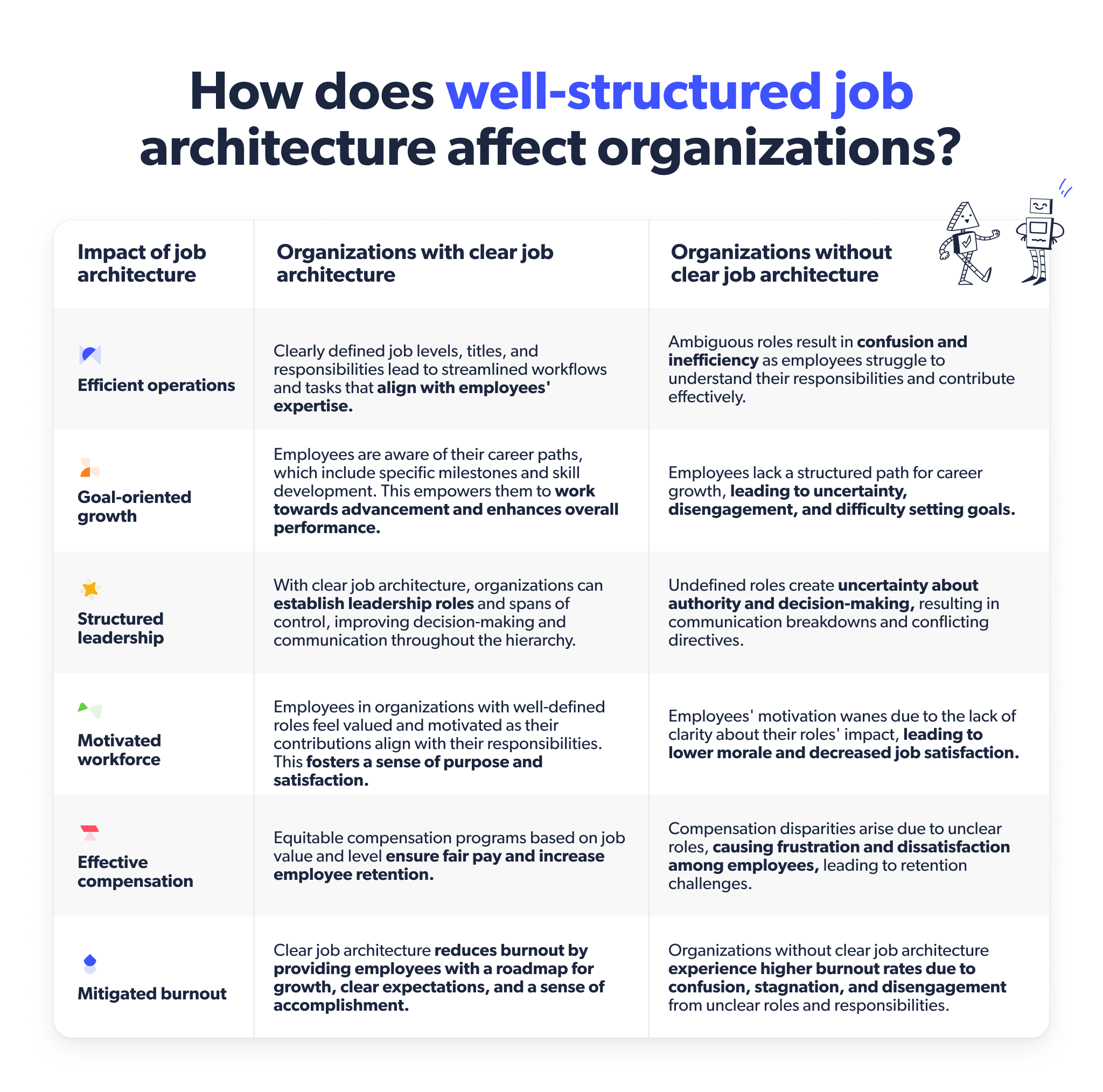
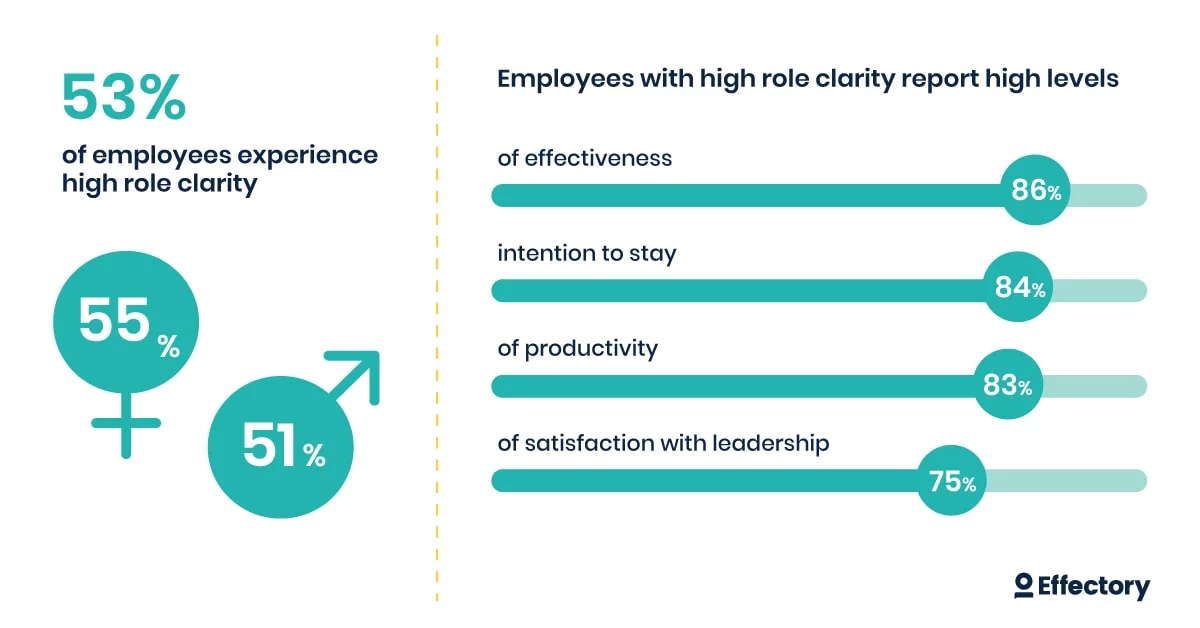




 info@hrforecast.de
info@hrforecast.de
 +49 89 215384810
+49 89 215384810






